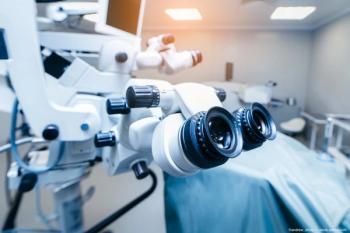
ARVO 2024: Repeatability and reproducibility of FLIO and erythrocyte mediated angiography in a non-human primate model
In a conversation with the Eye Care Network at ARVO, Osamah Saeedi, MD, MS, Associate Professor of Ophthalmology, Director of Clinical Research and Director of the Glaucoma Division at the University of Maryland School of Medicine, explained the key findings from his poster.
At this year's ARVO meeting in Seattle, Washington, the Eye Care Network spoke with Osamah Saeedi, MD, MS. Prior to the ARVO annual meeting, he presented a poster at the Imaging in the Eye Conference on 4 May, and took time to share his research with our team.
Video Transcript:
Editor's note: The below transcript has been lightly edited for clarity.
Osamah Saeedi, MD, MS:
I'm at ARVO 2024. Yesterday, I presented at the ARVO Imaging in the Eye Conference; I presented a poster entitled, "The repeatability and reproducibility of fluorescence lifetime imaging ophthalmoscopy (FLIO) and erythrocyte mediated angiography in a non-human primate model." The key findings here are we adjusted intraocular pressure in a non-human, in an acute IOP elevation model, in a nonhuman primate. And what we found essentially that the fluorescence lifetime imaging ophthalmoscopy and erythrocyte mediated angiography were...highly repeatable in this model.
This is particularly important, because both of these modalities are going to give us further insight, potentially, into the metabolic and non-pressure related changes in glaucoma. So we wanted to make sure that they were not affected by intraocular pressure. While this work is early, it is important as glaucoma specialists that we look for biomarkers for the disease that are not related to intraocular pressure. Hence, knowing the metabolic activity of a tissue, knowing the retinal blood flow, may ultimately help us both monitor the disease early on in, the in the process, as well as develop new treatments that are not related to intraocular pressure. So we have now established that these measurements are highly repeatable in this model of glaucoma, and so we will now look at the long-term changes with elevated intraocular pressure chronically in this model.
Newsletter
Don’t miss out—get Ophthalmology Times updates on the latest clinical advancements and expert interviews, straight to your inbox.


















































.png)


